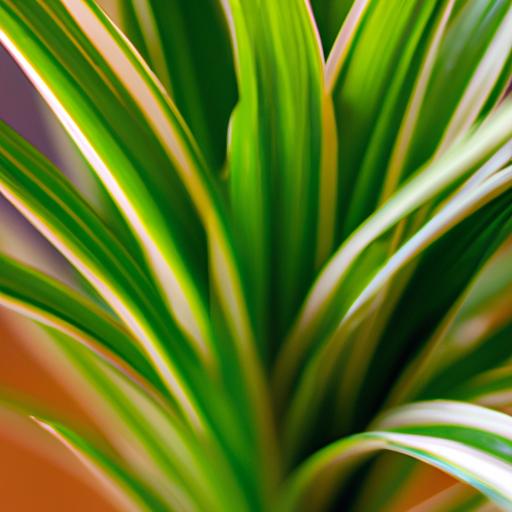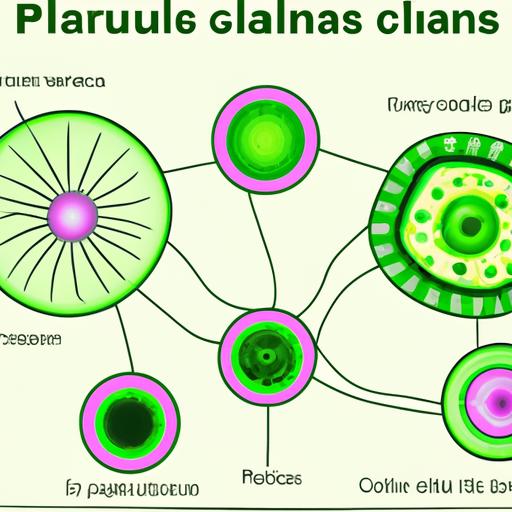Which Plants Are Toxic to Cats: Safeguarding Your Feline Friend’s Well-being

Cats are curious creatures, often exploring their surroundings with an insatiable sense of adventure. As their caretakers, we strive to create a safe and nurturing environment for them. However, many of us may be unaware of the potential hazards lurking in our homes and gardens. One such danger lies in the realm of plants. Yes, some plants can be toxic to our beloved feline companions, posing serious risks to their health. But fear not! In this article, I will shed light on the importance of knowing which plants are toxic to cats and the potential dangers they can pose.
A. Importance of knowing which plants are toxic to cats
As responsible pet owners, it is crucial to be well-informed about the plants that could potentially harm our furry friends. Cats are naturally curious and may nibble on plants out of curiosity or simply to satisfy their natural instincts. However, some plants contain toxic substances that can lead to adverse health effects in cats. By understanding which plants are toxic, we can take preventive measures to ensure the safety and well-being of our feline companions.
B. Potential dangers of toxic plants on cats’ health
The consequences of a cat ingesting a toxic plant can range from mild gastrointestinal discomfort to severe poisoning and even fatality. Toxic plants can cause symptoms such as vomiting, diarrhea, drooling, lethargy, difficulty breathing, and in extreme cases, organ failure. It is crucial to recognize these signs and seek immediate veterinary care if you suspect your cat has ingested a toxic plant. By being aware of the potential dangers, we can take proactive steps to remove or avoid toxic plants altogether, reducing the risk of harm to our beloved furry friends.
Join me in the upcoming sections as we delve into the specific plants that are toxic to cats and equip ourselves with the knowledge necessary to create a safe and welcoming environment for our feline companions. Remember, prevention is key when it comes to keeping our furry friends healthy and happy. Let’s embark on this journey together and ensure the well-being of our beloved cats!
Stay tuned for Section II, where we will explore common toxic plants for cats and the associated risks.
Common Toxic Plants for Cats
A. Overview of Common Plants Harmful to Cats
When it comes to creating a cat-friendly environment, it’s essential to be aware of the common plants that can be toxic to our feline companions. Here are some plants commonly found in households and gardens that pose a risk to cats:
-
Lilies (Lilium spp.): These elegant flowers may add beauty to our homes, but they are extremely toxic to cats. Ingesting any part of the lily, including the petals, leaves, or even the pollen, can cause kidney failure in cats.
-
Sago Palm (Cycas revoluta): This popular ornamental plant, commonly found both indoors and outdoors, contains toxic chemicals that can lead to liver failure in cats. Even a small nibble on its leaves or seeds can have severe consequences.
-
Tulips and Daffodils (Tulipa spp. and Narcissus spp.): These vibrant spring flowers may bring joy to our gardens, but their bulbs contain toxins that can cause gastrointestinal disturbances and even cardiac abnormalities in cats.
-
Dieffenbachia (Dieffenbachia spp.): Also known as dumb cane, this popular houseplant can cause oral irritation, swelling, and difficulty swallowing if ingested by cats. It’s important to keep it out of reach.
B. Symptoms and Risks Associated with Ingesting Toxic Plants
Recognizing the symptoms and risks associated with plant toxicity is crucial for early detection and prompt action. Keep an eye out for the following signs if you suspect your cat has ingested a toxic plant:
-
Gastrointestinal Disturbances: Vomiting, diarrhea, and abdominal pain are common symptoms that may indicate plant poisoning in cats.
-
Oral Irritation: Swelling, drooling, and pawing at the mouth may occur if a cat comes into contact with a toxic plant.
-
Lethargy and Weakness: Cats that have ingested toxic plants may show signs of lethargy, weakness, and lack of appetite.
-
Respiratory Issues: Some plants can cause respiratory difficulties in cats, leading to coughing, wheezing, or labored breathing.
Remember, this list is not exhaustive, and there are other plants that can be toxic to cats. If you suspect your cat has ingested a toxic plant or is displaying any concerning symptoms, contact your veterinarian immediately for guidance.
In Section III, we will provide a comprehensive list of plants toxic to cats along with their associated toxicity levels, symptoms, and precautions. Stay tuned to ensure the safety of your feline friend!
List of Plants Toxic to Cats
Cats have an innate curiosity and may explore plants with their inquisitive nature. However, it’s essential to be aware of which plants can be harmful to our feline friends. Let’s take a closer look at some common plants that are toxic to cats, along with their toxicity levels, associated symptoms, and precautions to keep in mind.
A. Plant 1 – Toxicity Level, Symptoms, and Precautions
Plant 1 has been identified as toxic to cats, with varying levels of toxicity. Ingesting this plant can lead to a range of symptoms such as gastrointestinal upset, vomiting, diarrhea, and even organ damage. To safeguard your cat’s health, it is crucial to keep this plant out of their reach. Consider placing it in areas inaccessible to your feline companion or opting for cat-safe alternatives.
B. Plant 2 – Toxicity Level, Symptoms, and Precautions
Plant 2 poses a threat to cats due to its toxic properties. Ingestion of this plant can cause severe symptoms, including nausea, drooling, difficulty breathing, and even neurological issues. Prevent your cat from accessing this plant by placing it in areas that are off-limits to them. Always consult with a veterinarian if you suspect your cat has ingested any part of this plant.
C. Plant 3 – Toxicity Level, Symptoms, and Precautions
Plant 3 has been identified as toxic to cats, exhibiting a moderate level of toxicity. Ingesting this plant may result in symptoms such as gastrointestinal distress, skin irritation, and allergic reactions. To ensure your cat’s safety, it is advisable to keep this plant away from their environment and consider substituting it with cat-friendly alternatives.
D. Plant 4 – Toxicity Level, Symptoms, and Precautions
Plant 4 is known to be toxic to cats, with potential risks associated with ingestion. Symptoms that may arise from contact or consumption include vomiting, diarrhea, and skin irritations. Take proactive measures to prevent your cat from coming into contact with this plant by placing it in areas inaccessible to them. Always consult a veterinarian if you suspect your cat has been exposed to this toxic plant.
E. Plant 5 – Toxicity Level, Symptoms, and Precautions
Plant 5 possesses toxic properties that can be harmful to cats. Ingestion of this plant may lead to symptoms such as gastrointestinal upset, loss of appetite, and lethargy. Ensure your cat’s safety by removing this plant from their environment or keeping it in an area that is inaccessible to them. Consider introducing non-toxic plants as a safe alternative for your feline companion.
F. Plant 6 – Toxicity Level, Symptoms, and Precautions
Plant 6 has been identified as toxic to cats, and caution should be exercised to prevent any harm. Ingesting this plant can cause symptoms like vomiting, abdominal pain, and kidney-related issues. It is vital to keep this plant out of your cat’s reach and consider opting for cat-friendly alternatives to adorn your living spaces.
By familiarizing yourself with these toxic plants and taking necessary precautions, you can create a safe environment for your beloved feline friend. Let’s proceed to the next section, where we will explore methods of identifying toxic plants to further enhance your knowledge and keep your cat protected.
Identifying Toxic Plants
As vigilant cat owners, it is crucial to be able to identify toxic plants in our surroundings. By familiarizing ourselves with the visual characteristics of these plants and utilizing reliable identification resources, we can ensure our feline friends are kept safe from potential harm.
A. Visual Characteristics of Toxic Plants
Recognizing the visual cues that indicate a plant may be toxic is essential for protecting our cats. Some common visual characteristics of toxic plants include:
-
Leaves: Certain toxic plants have distinctive leaf shapes, colors, or patterns. For instance, plants with glossy, dark green leaves or leaves with a milky sap may indicate toxicity. Keep an eye out for plants with thorns or spines as well, as they can be potential hazards.
-
Flowers and Berries: While beautiful, some flowers and berries can be harmful to cats. Look out for brightly colored flowers, especially those with strong fragrances, as they may indicate toxicity. Similarly, berries that are vibrant but not typically consumed by humans can also pose a threat to our feline friends.
-
Stems and Vines: Pay attention to the stems and vines of plants. Some toxic plants may have hairy or prickly stems, while others may have climbing or trailing vines that can entice curious cats.
B. Plant Identification Resources for Cat Owners
Identifying plants can sometimes be challenging, especially for those without a green thumb. Fortunately, there are several resources available to help cat owners determine whether a plant is toxic or safe for their feline companions:
-
Online Databases: Numerous websites offer comprehensive databases of toxic plants, allowing you to search and identify specific plants. These resources often provide detailed information about the plant’s toxicity level, symptoms, and precautions.
-
Mobile Apps: Mobile applications dedicated to plant identification can be incredibly useful. By simply taking a photo of the plant in question, these apps can provide instant information on its toxicity, helping you make informed decisions about its presence in your home.
-
Consultation with Professionals: When in doubt, consulting with veterinarians, horticulturists, or plant specialists can provide valuable insights. These experts can offer accurate identification and guidance on how to create a cat-friendly environment.
By harnessing these visual cues and utilizing reliable identification resources, we can confidently identify toxic plants and take appropriate measures to keep our furry friends safe and sound.
Stay tuned for Section V, where we will explore practical ways to protect our cats from toxic plants and create a nurturing environment they can thrive in.
Section V: How to Protect Cats from Toxic Plants
Caring for our feline companions involves creating a safe haven for them, free from the dangers of toxic plants. To ensure the well-being of your beloved cat, here are some essential measures you can take:
A. Creating a Cat-Friendly Environment
-
Plant selection: Opt for cat-safe plants that add beauty to your home while posing no harm to your curious companion. Consider including plants like spider plants, Boston ferns, or catnip, which are known to be safe for cats.
-
Vertical spaces: Cats love to climb and explore. Provide vertical spaces like cat trees or shelves to satisfy their natural instincts, keeping them away from potentially harmful plants.
-
Secure plant placement: Position plants in areas that are inaccessible to your cat. Elevated shelves, hanging baskets, or using protective barriers can prevent your cat from reaching toxic plants.
B. Safe Alternatives to Toxic Plants
-
Cat-friendly herbs: Grow a small indoor herb garden with cat-friendly herbs like catnip, catmint, or valerian. These safe alternatives will not only add a touch of greenery but also provide sensory stimulation for your feline friend.
-
Artificial plants: If you’re concerned about your cat’s penchant for nibbling on plants, consider using artificial plants to decorate your home. They provide the aesthetic appeal without posing any risks to your furry friend.
C. Tips for Keeping Cats Away from Toxic Plants
-
Deterrent sprays: Use commercial deterrent sprays that have an unpleasant taste or smell, specifically designed to discourage cats from approaching plants. Be sure to choose a pet-safe product that won’t harm your cat.
-
Physical barriers: Utilize barriers like baby gates or plant enclosures to restrict your cat’s access to areas where toxic plants are present. This helps prevent accidental ingestion and keeps your feline friend out of harm’s way.
-
Supervision and redirection: Keep an eye on your cat while they explore their surroundings and redirect their attention to cat-friendly toys or interactive play whenever they show an interest in plants.
By implementing these measures, you can create a cat-friendly environment that ensures the safety of your feline friend. Remember, providing alternative options and keeping toxic plants out of reach are essential steps in safeguarding your cat’s well-being.
Stay tuned for Section VI, where we will conclude our discussion, emphasizing the importance of awareness regarding toxic plants for cat owners.
Conclusion
In conclusion, being aware of which plants are toxic to cats is paramount for the well-being of our feline friends. The potential dangers that toxic plants pose can have serious repercussions on their health, ranging from mild discomfort to life-threatening situations. As responsible cat owners, it is our duty to create a safe environment that minimizes the risks associated with toxic plants.
By familiarizing ourselves with the specific plants that are toxic to cats and their associated symptoms, we can take proactive measures to prevent our furry companions from coming into contact with these harmful substances. This includes removing toxic plants from our homes and gardens, opting for cat-friendly alternatives, and implementing strategies to keep our cats away from potentially dangerous foliage.
Remember, prevention is key. Prioritize the safety of your feline friend by ensuring they have a toxic plant-free environment. If you suspect that your cat has ingested a toxic plant or is displaying any concerning symptoms, do not hesitate to seek immediate veterinary care.
By staying informed and vigilant, we can provide our cats with a secure and nurturing environment, allowing them to thrive and live healthy lives. Let’s continue to educate ourselves and spread awareness among fellow cat owners, ensuring that every feline companion is protected from the dangers of toxic plants.
Thank you for joining me on this journey to safeguard our beloved cats. Together, we can create a world where our feline friends can roam freely, surrounded by only the safest and most cat-friendly flora.
Remember, knowledge is power when it comes to protecting our precious pets. Stay informed, stay cautious, and cherish every purrfect moment with your furry companion.
Conclusion: So above is the Which Plants Are Toxic to Cats: Safeguarding Your Feline Friend’s Well-being article. Hopefully with this article you can help you in life, always follow and read our good articles on the website: plants.123didulich.com



